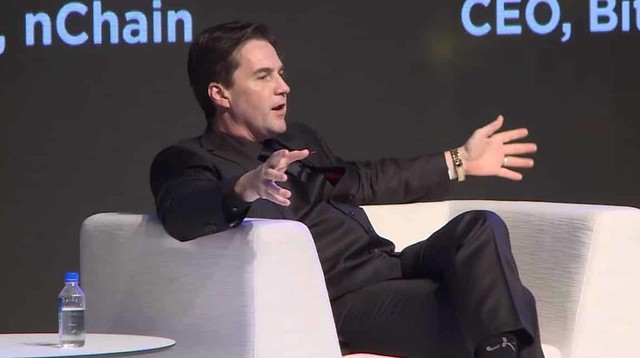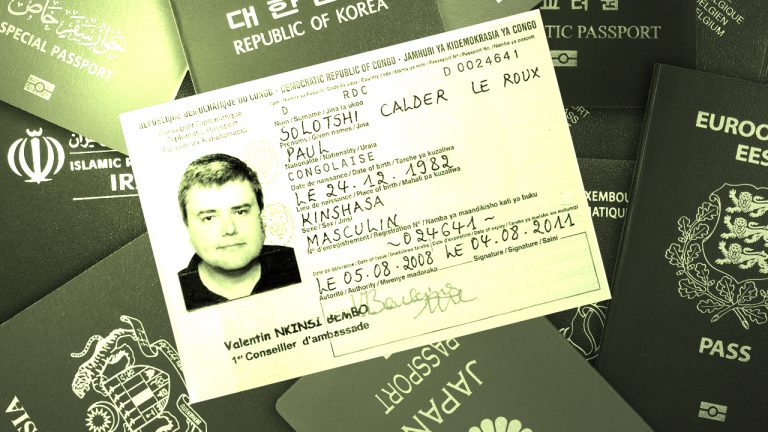
2024-3-15 14:00 |
Craig Wright is not Satoshi.
Following the conclusion of closing arguments in the Crypto Open Patent Alliance (COPA) trial, Judge Mellor declared that Wright is not the author of the Bitcoin whitepaper nor the individual behind the pseudonym Satoshi Nakamoto.
The month-long trial presented “overwhelming” evidence against Wright’s assertions, according to the judge. He announced his intention to issue a detailed ruling outlining his conclusions, which refute Wright’s claims to have created the Bitcoin system or authored its initial software versions.
“I will make certain declarations, which I am satisfied are useful and are necessary to do justice between the parties. First, that Dr. Wright is not the author of the Bitcoin white paper. Second, Dr. Wright is not the person who adopted or operated under the pseudonym Satoshi Nakamoto in the period 2008 to 2011. Third, Dr. Wright is not the person who created the Bitcoin System. And, fourth, he is not the author of the initial versions of the Bitcoin software. Any further relief will be dealt with in my written judgment,” stated Judge Mellor.
The trial, which commenced in London on March 12, stemmed from a lawsuit filed by COPA against Wright, an Australian computer scientist who has claimed to be Nakamoto since 2016. COPA sought injunctive relief to prevent Wright from perpetuating his claims of being Nakamoto, citing allegations of document forgery in support of his assertions.
Founded in 2020, COPA aims to promote the adoption and advancement of cryptocurrency technologies while eliminating patents as barriers to growth and innovation. Its membership includes industry giants such as Coinbase, Block, Meta, MicroStrategy, Kraken, Paradigm, Uniswap, and Worldcoin.
The ruling marks a significant victory for COPA and its supporters, including Twitter founder Jack Dorsey and Coinbase. Justice Mellor’s decision also has implications for two other cases involving Wright, including one against Coinbase and Dorsey’s Block, which hinged on the outcome of this trial.
Wright declined to provide comment following the ruling.
Fascinating CorrespondenceFascinating correspondence between Satoshi Nakamoto and his earliest known collaborator, Martti Malmi, was released as part of the COPA trial.
The unearthed emails offer fresh insight into the intentions of the mysterious Bitcoin creator. It seems that Satoshi was aware from the very beginning that the proof-of-work consensus algorithm was energy-intensive, and would be controversial. He wrote to Malmi that it would be “ironic if we end up having to choose between economic liberty and conservation.” Satoshi further wrote that Bitcoin can only be peer-to-peer “without a trusted third party. If it did grow to consume significant energy, I think it would still be less wasteful than the labor and resource-intensive conventional banking activity it would replace.”
Why Is Bitcoin Capped At 21 Million?The new Satoshi emails also revealed why the developer chose to cap Bitcoin’s supply at 21,000,000. “My choice for the number of coins and distribution schedule was an educated guess. It was a difficult choice, because once the network is going it’s locked in and we’re stuck with it. I wanted to pick something that would make prices similar to existing currencies, but without knowing the future, that’s very hard,” Nakamoto said.
“If you imagine it being used for some fraction of world commerce, then there’s only going to be 21 million coins for the whole world, so it would be worth much more per unit. Values are 64-bit integers with 8 decimal places, so 1 coin is represented internally as 100000000. There’s plenty of granularity if typical prices become small. For example, if 0.001 is worth 1 Euro, then it might be easier to change where the decimal point is displayed, so if you had 1 Bitcoin it’s now displayed as 1000, and 0.001 is displayed as 1,” Nakamoto wrote.
What Was The Satoshi Nakamoto Identity Case About?In the COPA trial, the identity of Bitcoin’s creator, Satoshi Nakamoto, was under scrutiny. Craig Wright, an Australian computer scientist, has long claimed to be Satoshi, a claim that has sparked widespread debate and legal action.
Wright’s assertion has led him to file lawsuits against developers and others in the Bitcoin community, aiming to establish intellectual property rights over the cryptocurrency. If successful, Wright could have potentially controled the development of Bitcoin’s codebase and dictated its usage terms.
The trial, initiated by the Crypto Open Patent Alliance (COPA), sought to refute Wright’s claim to being Satoshi. COPA’s challenge involves calling upon early Bitcoin collaborators, now prominent figures in the crypto world, to testify against Wright.
Witnesses included Adam Back, Mike Hearn, Martti Malmi, and Zooko Wilcox-O’Hearn, each an early contributor to Bitcoin’s development. Their testimonies dismantled Wright’s narrative by highlighting inconsistencies and disputing his account of Bitcoin’s early days. The trial also delved into the technical and philosophical underpinnings of Bitcoin, with discussions on its creation, the intentions of its founder, and the implications of Wright’s claims on the cryptocurrency’s future.
Wright’s loss protects the decentralized ethos of Bitcoin. An alternative outcome would have had far-reaching consequences for the cryptocurrency community, potentially reshaping the governance and development of Bitcoin.
Luckily sanity has prevailed, Craig Wright is not Satoshi.
Why Has Satoshi Nakamoto Remain Anonymous?The reason why Craig Wright has been able to claim he is Satoshi for years is that one of the many intriguing ideas behind the best-known and most decentralized cryptocurrency is the fact that nobody really knows for sure who created Bitcoin – and speculation continues to this day.
Bitcoin (BTC) first entered the public domain in October 2008 when someone calling themselves Satoshi Nakamoto sent a paper called “Bitcoin: A Peer-To-Peer Electronic Cash System” to an obscure Cypherpunk email list. A small group of cryptographers debated the paper but few believed it had any chance of success.
Then, on January 3, 2009, Nakamoto brought the Bitcoin network into existence by mining the first block of the ledger.
The abstract from Satoshi Nakamoto’s Bitcoin Whitepaper
Within the first block, he embedded the text, “The Times 03/Jan/2009 Chancellor on brink of second bailout for banks.” This was a reference to the global financial crisis of the time, and juxtaposes the hard-coded, unchangeable economic system of Bitcoin, against the legacy banking system and its inflation-ridden fiat currencies.
In the months to follow, Nakamoto and a coder named Hal Finney began to iron out the kinks, and fix the bugs in what was a revolutionary idea – the first decentralized digital currency – Bitcoin.
Bitcoin is an amalgamation of ideas that originate from the cypherpunk movement. One of the reasons that Bitcoin can be difficult for newcomers to understand is that it intersects with concepts from money, technology, philosophy, computing, politics, and more. Or as John Oliver once quipped, Bitcoin is “Everything you don’t understand about money combined with everything you don’t understand about computers.”
Satoshi Nakamoto’s Bitcoin philosophyIn the early days of Bitcoin, Nakamoto was a prolific online author. He wrote about Bitcoin online, answering questions, via email and on the same cryptography mailing list. These writings have been preserved and they make it clear that one of Nakamoto’s primary motivations was to create a decentralized digital currency outside of the control of a central bank.
In 2011, he wrote, “The root problem with conventional currency is all the trust that’s required to make it work. The central bank must be trusted not to debase the currency, but the history of fiat currencies is full of breaches of that trust. Banks must be trusted to hold our money and transfer it electronically, but they lend it out in waves of credit bubbles with barely a fraction in reserve.”
Who Is Satoshi Nakamoto?The invention of the Bitcoin blockchain as outlined in the original Bitcoin whitepaper was a groundbreaking achievement in computer science. Asked the question ‘who invented cryptocurrency?’, many people will name Nakamoto, but as he himself acknowledged in the Bitcoin whitepaper’s concise reference section, Bitcoin was deftly built on top of the work of many others in the field.
Nonetheless, it was Nakamoto’s invention of the proof-of-work consensus algorithm that solved the computational issue called the “Byzantine Generals problem” which prevents double-spends and makes a decentralized digital currency possible. This suggests that either Nakamoto was adept in both economics and computer programming — or it points to a collaborative effort.
It is important to note that there is no record of a programmer by the name of Satoshi Nakamoto before 2008. In addition, both the email address and website used by Nakamoto could not be tracked back to any one source. Thus, it is curious why a person possessing such a wide array of knowledge would choose to remain anonymous and go to such lengths to preserve his privacy.
In April 2011, presumably satisfied that the Bitcoin project was successfully underway, Nakamoto sent a final email to the cryptography list, stating “I’ve moved on to other things. It’s in good hands with Gavin (Gavin Andresen) and everyone.” Satoshi then handed over the source code and disappeared for good.
Today, 12 years later, the Bitcoin blockchain has a market cap of around 1.2 trillion dollars. This means that the mysterious Satoshi Nakamoto effectively appeared out of nowhere, invented a new form of currency that is 100% digital, not under the control of any government or bank, is worth over a trillion dollars, and then vanished. Strange but true.
How Rich Is Satoshi Nakamoto?What makes the story even more intriguing is the fact that because Satoshi mined the first Bitcoins back in 2009 when it was trivial to mine bitcoins quickly and easily, it’s estimated that Satoshi Nakamoto owns approximately 1 million Bitcoins. How do we know? Because the Bitcoin blockchain is a public ledger, it is possible to see these Bitcoins on the Bitcoin blockchain and they have never been moved, despite being worth over 60 billion dollars.
Possible reasons for Nakamoto’s anonymityNakamoto appears to have had the foresight to know that if Bitcoin was to succeed as a decentralized currency, it would need to grow organically, with no leader or figurehead. Therefore, likely for the following reasons, the Nakamoto identity went dark and will remain so.
Equal Influence: By not revealing their identity, Nakamoto ensured that no individual or group could exert undue influence or control over Bitcoin. The focus was placed on the decentralized nature of the technology itself, rather than on the personality or reputation of a Bitcoin creator. Nakamoto knew that if Bitcoin was to succeed as a decentralized currency, it would need to grow organically, with no leader or figurehead. Any announcement or commentary by Nakamoto could be misunderstood or interpreted as investment advice leading to price movements. A similar scenario led to the creator of Litecoin, Charlie Lee, deciding to sell all his LTC holdings. In a Reddit post, Lee explained his decision saying, “Whenever I tweet about the Litecoin price or even just good or bad news, I get accused of doing it for personal benefit. Some people even think I short LTC! So in a sense, it is a conflict of interest for me to hold LTC and tweet about it because I have so much influence.”
Community-Driven Project: Satoshi Nakamoto wanted Bitcoin to be a community-driven project where decisions were made based on consensus among participants rather than being influenced by a single authority figure. Remaining anonymous allowed Nakamoto to step back from the spotlight and encourage others to take ownership of the project’s development and direction. Satoshi Nakamoto emphasized the importance of the technology itself, rather than his (or their) personal identity. By not revealing himself, Nakamoto redirected attention to the innovative aspects of Bitcoin, such as the decentralized ledger, proof-of-work consensus mechanism, and the potential for financial empowerment.
Legal and Regulatory Considerations: Anonymity may have also been a way for Nakamoto to avoid legal and regulatory complications that could arise from being associated with the creation of a disruptive technology like Bitcoin. By remaining anonymous, Bitcoin’s inventors were shielded from potential legal issues or conflicts of interest.
Privacy and Security Concerns: By remaining anonymous, Satoshi Nakamoto protected his personal privacy and reduced the risk of being targeted by hackers, criminals, or government authorities. Bitcoin was designed to be decentralized and resistant to censorship, and Nakamoto’s anonymity helped maintain that ethos.
Avoiding the attention of authoritiesLet’s drill down a little into the idea that the creators of alternative currencies are likely to attract the attention of authorities and criminals.
A resident of Hawaii named Bernard Von NotHaus created a private currency in 1998, which he named the Liberty Dollar. The currency flourished for a while but its minting operation was eventually raided by the FBI and the Secret Service in 2007. Following criminal proceedings in 2009, the currency was shut down with NotHaus found guilty of creating a “private coin or currency system to compete with the official coinage and currency of the United States.”
Additionally, in 2007, a digital currency named e-Gold was accused of fostering illegal activity because it did not have enough information on its customers. Its owner was sentenced to house arrest and the company was shut down. It is likely that this enthusiasm by government agencies to arrest entrepreneurs in the alternative currency space was a factor in Nakamoto’s strategy.
Lastly, Bitcoin is available to all to use. This means that it can be used to pay for both legal and illegal services, as is the case with fiat currency. However, it has been a popular payment method on darknet marketplaces and initially gained notoriety from its use on the now-defunct Silk Road. The creator and operator of the infamous dark web marketplace, Ross Ulbricht, was sentenced to life in prison for his role in facilitating the trade of drugs and other prohibited materials.
Ulbricht appealed his sentence to the United States Supreme Court in December 2017, and there was much hope that he would make it onto President Trump’s pardon list – but he remains in federal prison at this time. Nakamoto may have faced a similar fate had he revealed his true identity.
In 2023, under the leadership of Gary Gensler, the United States SEC is actively targeting crypto exchanges Coinbase, Binance and others, alleging that they are selling unregistered securities. These moves appear to be part of a concerted effort to discourage Americans from adopting cryptocurrencies – and to punish the founders of organisations that promote the use and exchange of cryptocurrencies.
What would Satoshi do?Nakamoto seems to have understood that it is only when separated from their creator can new concepts, inventions, and content be open to interpretation. Blockchain investor and technologist Jill Carlson says this is why Bitcoin represents different things to different people. This is why forks happen and why, with every debate, there is a vocal faction asking the question “What would Satoshi do?”
Carlson says that “this inefficiency is also one of the main value propositions of Bitcoin. It does not have a leader who can answer that question, who can decide on forks, or can steer the community in one direction or another. So the purpose of the network and the value of the asset remain uncorrupted by intent. Often cited as a problem, this may be the feature that will ensure Bitcoin’s staying power.”
Nakamoto realized that for Bitcoin to remain decentralized, it could not have a leader or a central point of failure that could be compromised. Faith in the technology needed to be based on objective assessment, not the pronouncements of a charismatic leader or an organization. By remaining anonymous, Nakamoto has given individuals the freedom to make their own judgments of the technology and determine the value of the asset independent of its creator.
Who is Behind Bitcoin?Over the years there has been intense speculation over who created Bitcoin and who Satoshi might be. A man, a woman, an intelligence agency or a small group of dedicated cypherpunks? Here are some of the leading candidates.
Craig Wright, an Australian programmer, and businessman, first claimed to be Satoshi Nakamoto in 2016. He provided some pieces of evidence which were later found to be inconclusive as they were publicly available from the ledger. He has also been accused of faking announcements and blog posts in order to appear as the real Satoshi. Most believe his claim to be a fabrication. For instance, Ethereum founder Vitalik Buterin has voiced his opinion calling Wright crazy and accusing him of being a fraud. Aside from the current UK High Court case, Wright has been embroiled in much legal conflict over his claims to be Satoshi and has already lost several cases. It is generally accepted that Wright is a fantasist.
Another candidate is Hal Finney. Finney was a well-known cypherpunk and cryptographer who created the first iteration of a reusable proof-of-work system. Finney was the first person to download the Bitcoin client and the first person to receive Bitcoin sent by Nakamoto in 2009. Finney refuted the claims that he was Nakamoto before his death in 2014. Following his death Finney was cryogenically frozen by the Alcor Life Extension Foundation.
Some consider cryptographer Nick Szabo to be a credible candidate. He designed the architecture for a decentralized digital currency called Bitgold prior to the launch of Bitcoin. Though the architecture was never set in motion, there are similarities to Bitcoin’s design. This has led to speculation that Szabo is Nakamoto. However, he has repeatedly denied these allegations.
Finally, another possible candidate is Blockstream CEO Adam Back. A cryptographer and cypherpunk, Back corresponded with Nakamoto and was cited in the Bitcoin whitepaper. Back has denied being Nakamoto, but others have suggested that Back had previously claimed to have met Nakamoto. Back denies this.
In a 2020 Bloomberg article, Back again denied being Nakamoto and suggested it was better for Nakamoto’s true identity to remain unknown. “It’s generally viewed at this point as better that the founder of Bitcoin is not known,” he says. “Because Bitcoin is more like digital gold, you wouldn’t want gold to have a founder. For Bitcoin to keep a commodity-like perception, I think it’s a very good thing that Satoshi stays out of the public eye.”
Bitcoin’s Future depends on Satoshi Remaining UnknownWhile the real identity of Bitcoin founder Satoshi Nakamoto may never be definitively uncovered, the important thing is that the technology works without his involvement. Further, Bitcoin is strengthened by the fact that its creator is anonymous as people can focus on the technology without the distractions of its creator.
From this perspective, the enigma of Satoshi Nakamoto is what gives Bitcoin its mystical origin – a necessary precondition for the creation of a new form of money, and the birth of a new asset class. Nakamoto’s decision to remain anonymous has contributed to the mystique and enduring fascination surrounding Bitcoin and blockchain technology. It has allowed the focus to remain on the decentralized and revolutionary aspects of the technology, rather than on the identity or motivations of its creator.
With crypto often appearing to be under attack from regulators around the world, for Bitcoin to continue to attract new users, and for politicians to be prepared to fight for Bitcoin, it is vital that the true identity of Satoshi Nakamoto remains unknown.
origin »Nakamoto Dark (NKT) íà Currencies.ru
|
|












